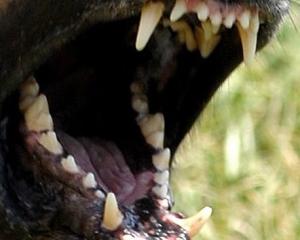A spacecraft that must ultimately crash to succeed has been launched on a NASA mission designed to deflect an asteroid from a potential doomsday collision with Earth.
The so-called DART spacecraft soared into the night sky at 10.21pm (US Pacific time) on Tuesday from the Vandenberg US Space Force Base in California carried aboard a SpaceX-owned Falcon 9 rocket.
The blast-off was shown live on NASA TV.
The DART payload, about the size of a vending machine, was released from the booster a few minutes after launch to begin a 10-month journey into space, some 11 million kilometres from Earth.
Moments later, the rocket's reusable lower stage flew back to Earth and safely touched down on a landing vessel floating in the Pacific in what has become a routine part of the cost-cutting launch sequence pioneered by SpaceX.
DART will fly under the guidance of NASA's flight directors until the last hours of its odyssey, when control will be handed over to an autonomous on-board navigation system.
The mission's finale will test spacecraft's ability to alter an asteroid's trajectory with sheer kinetic force, ploughing into it at high speed to nudge the space boulder off course just enough to keep our planet out of harm's way.
Cameras mounted on the impactor and on a briefcase-sized mini-spacecraft to be released from DART about 10 days beforehand will record the collision and beam images of it back to Earth.
The asteroid that DART is aiming for poses no actual threat and is tiny compared with the cataclysmic Chicxulub asteroid that struck Earth some 66 million years ago, leading to extinction of the dinosaurs. But scientists say smaller asteroids are far more common and of greater theoretical concern in the near term.
DART's target is an asteroid "moonlet" the size of a football stadium that orbits a chunk of rock five times larger in a binary asteroid system named Didymos, the Greek word for twin.
The team behind DART, short for Double Asteroid Redirection Test, chose the Didymos system because its relative proximity to Earth and dual-asteroid configuration make it ideal for observing the results of the impact.
BUMPING ASTEROID MOONLET
The plan is to fly the DART spacecraft directly into the moonlet, called Dimorphos, at 24,000km/h, bumping it hard enough to shift its orbital track around the larger asteroid.
Cameras on the impactor and on a briefcase-sized mini-spacecraft released from DART about 10 days beforehand will record the collision and beam images back to Earth. Ground-based telescopes will measure how much the moonlet's orbit around Didymos changes.
The DART team expects to shorten Dimorphos' orbital track by 10 minutes but would consider at least 73 seconds a success. A small nudge to an asteroid millions of miles away would be sufficient to safely reroute it.
DART is the latest of several NASA missions of recent years to explore and interact with asteroids, primordial rocky remnants from the solar system's formation 4.6 billion years ago.
Last month, NASA launched a probe on a voyage to the Trojan asteroid clusters orbiting near Jupiter, while the grab-and-go spacecraft OSIRES-REx is on its way back to Earth with a sample collected last October from the asteroid Bennu.
The Dimorphos moonlet is one of the smallest astronomical objects to receive a permanent name and is one of 27,500 known near-Earth asteroids of all sizes tracked by NASA.
Although all none poses a foreseeable hazard to humankind, NASA estimates many more asteroids remain undetected in the near-Earth vicinity.
The DART spacecraft, cube-shaped with two rectangular solar arrays, is due to rendezvous with the Didymos-Dimorphos pair in late September 2022.
The entire cost of the DART project will run about $US330 million ($NZ477 million), according to Lindley, well below that of many of NASA's most ambitious science missions.












